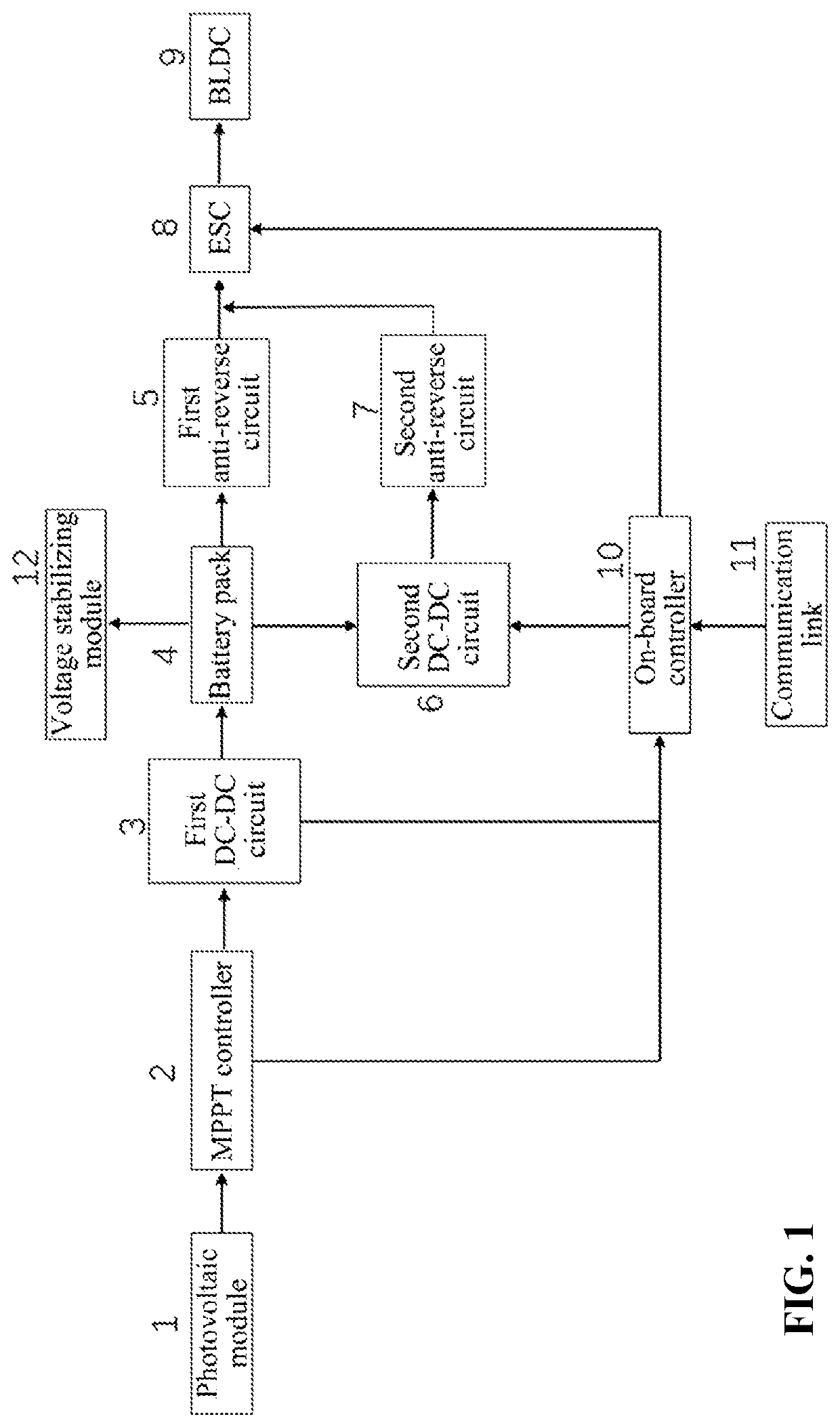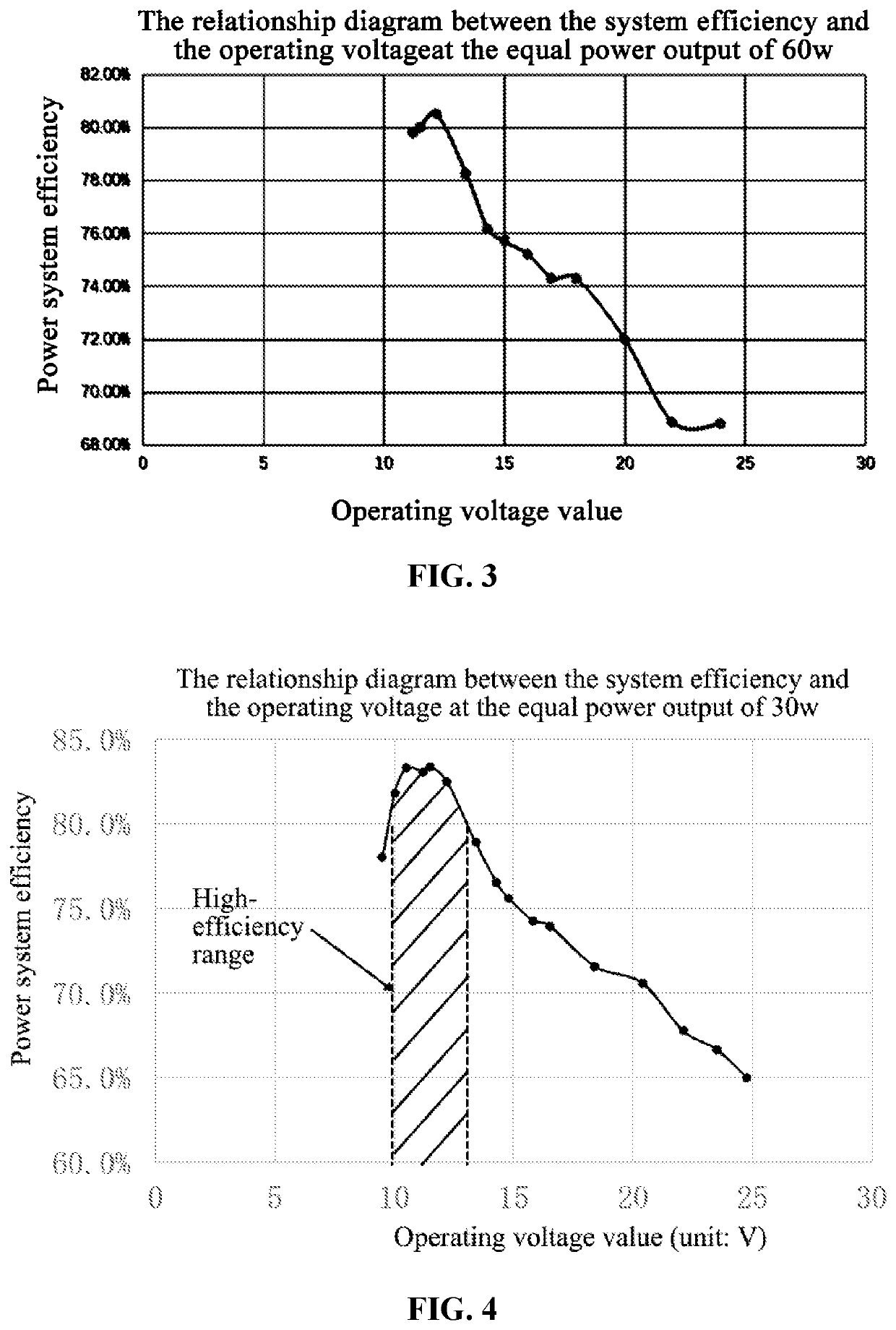Energy management control system suitable for solar-powered unmanned aerial vehicle and control method thereof
a technology of solar energy and control system, which is applied in the direction of energy-efficient board measures, battery/fuel cell control arrangements, light to electrical conversion, etc., can solve the problems of difficult to solve contradictions, the maximum output power of the power system often cannot meet the requirements of take-off, climbing or maneuvering flight, etc., to achieve maximum power output, improve the power system efficiency of solar-powered, and improve the flight performance of the aircraft
- Summary
- Abstract
- Description
- Claims
- Application Information
AI Technical Summary
Benefits of technology
Problems solved by technology
Method used
Image
Examples
Embodiment Construction
[0029]The present disclosure will be further explained with reference to the drawings and specific embodiments.
[0030]As shown in FIG. 1, this example mainly provides an energy management system suitable for a solar-powered unmanned aerial vehicle, comprising a photovoltaic module, an MPPT controller, a first DC-DC circuit, a battery pack, a first anti-reverse circuit, a second DC-DC circuit, a second anti-reverse circuit, an ESC, a BLDC, an on-board controller, a communication link and a voltage stabilizing module; wherein the MPPT controller is powered by the photovoltaic module and is used to adjust the output voltage and current of the photovoltaic module to achieve the maximum power output; the output end of the MPPT controller is connected with the input end of the first DC-DC circuit, and the output end of the first DC-DC circuit is connected with the battery pack for controlling charging the battery pack.
[0031]In a specific embodiment, the MPPT controller can use the LT8490 c...
PUM
 Login to View More
Login to View More Abstract
Description
Claims
Application Information
 Login to View More
Login to View More - R&D
- Intellectual Property
- Life Sciences
- Materials
- Tech Scout
- Unparalleled Data Quality
- Higher Quality Content
- 60% Fewer Hallucinations
Browse by: Latest US Patents, China's latest patents, Technical Efficacy Thesaurus, Application Domain, Technology Topic, Popular Technical Reports.
© 2025 PatSnap. All rights reserved.Legal|Privacy policy|Modern Slavery Act Transparency Statement|Sitemap|About US| Contact US: help@patsnap.com



